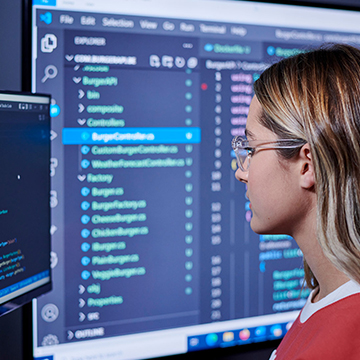
A new buzzword doing the rounds in technology circles these days is “Web3.0”. This can be a very confusing term for those of us who think there’s only one Web - the World Wide Web that we use to connect to people, work, acquire goods and services on a daily basis. Many of us are equally unaware that there was a “Web1.0” at the start, and that currently we are using “Web2.0”. So what do these terms actually mean?
What was Web1.0?
If you are old enough to remember the 1990s then you will recall having to dial up to link to the internet, only to access fixed, motionless pages of text that you could read. This was all that was available on the web at that time. Web1.0 was all about accessing data – magazines, articles and newspaper pages which could be read or downloaded. There was no interaction, no engagement and certainly no social media. Web1.0 can best be described as a time when a handful of people generated static data. There was no flexibility and you, as the user, could not generate content. This early version of the web is often called the “read only” web - you could read, but you couldn’t respond.
What is Web 2.0?
The second generation of the web started in around 2004 with a complete shift in the way people thought of what the web could, and should, do. Instead of a static - read only platform, it became interactive. This is the web that we are so familiar with today. We understand it as a platform on which we can do the following:
- Generate content by uploading information (posts and photos on Facebook, for example)
- Interact on social media sites
- Downloading information (movies and documents)
- Market ourselves and our services
- Interact with and buy from businesses
- Share images and videos
What is Web3.0?
Currently, a new way of thinking about the web is developing. This is becoming referred to as Web3.0 and is seen by many as the way of the future. Web3.0 is not yet a reality but in theory, the main difference between it and previous versions is decentralisation. The idea and the term “Web3.0” is believed to have been coined by Gavin Wood, the co-founder of Ethereum, a decentralised, open-source blockchain, which created one of the more successful cryptocurrencies, Ether. Wood envisions the future of the web as a decentralised arena, a place controlled by users rather than huge corporations, enabled through the use of blockchain technology.
How is Web3.0 different from Web2.0?
The differences between Web2.0 and Web3.0, according to US financial and investing website, Investopedia, include:
- Web3.0 is decentralised. We know that the current web uses “http” to find information. With Web 3.0, says Investopedia, the same information would be stored in many different places which would wrest power from “the internet giants” like Facebook, Amazon and Google. It will be the users who will own, sell and control generated data. This means that Web3.0 will be more transparent and democratic.
- Web3.0 offers more privacy and more security. While Web2.0 focuses on surveillance and supervision, Web3.0 will focus on privacy and security. Because users will control their own data, they will be able to keep it secret if they want to.
- Web3.0 works without authorisation. There will be nothing requiring users to get permission to interact and therefore, says Investopedia, Web3.0 applications will run “either on blockchains or decentralised peer-to-peer networks or a combination thereof”.
- Web3.0 enhances Artificial intelligence (AI). It is predicted that in Web3.0, computers will provide users with faster and more accurate results, thanks to technologies that allow them to understand information in the same way as humans do. This will make a huge difference to our searches on the web, because AI will allow these to be more accurate.
If the future of the internet is something that excites and interests you then take a look at The IIE Bachelor of Computer and Information Sciences in Application Development. It’s a qualification that has been designed to develop graduates’ abilities to design, code, implement and manage solution-focused software by producing systemic thinkers who can develop software solutions for any device or platform.
This degree provides candidates with a thorough theoretical grounding and knowledge base in the key principles of information technology (IT), programming, mobile application development across platforms, web development, database design, troubleshooting, testing, connectivity, customisation and project management. Graduates will develop meaningful software development acumen grounded in a deep understanding of holistic application programming and development.
At The IIE’s Varsity College we understand that no two students are the same or learn the same. That’s why we make sure a student’s education is shaped around them; how they like to learn, what they are passionate about, what makes them tick, and what makes them thrive. Our education by design approach allows students to grow into their best, and creates a space where they can live, learn and play - their way.